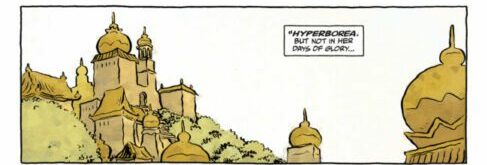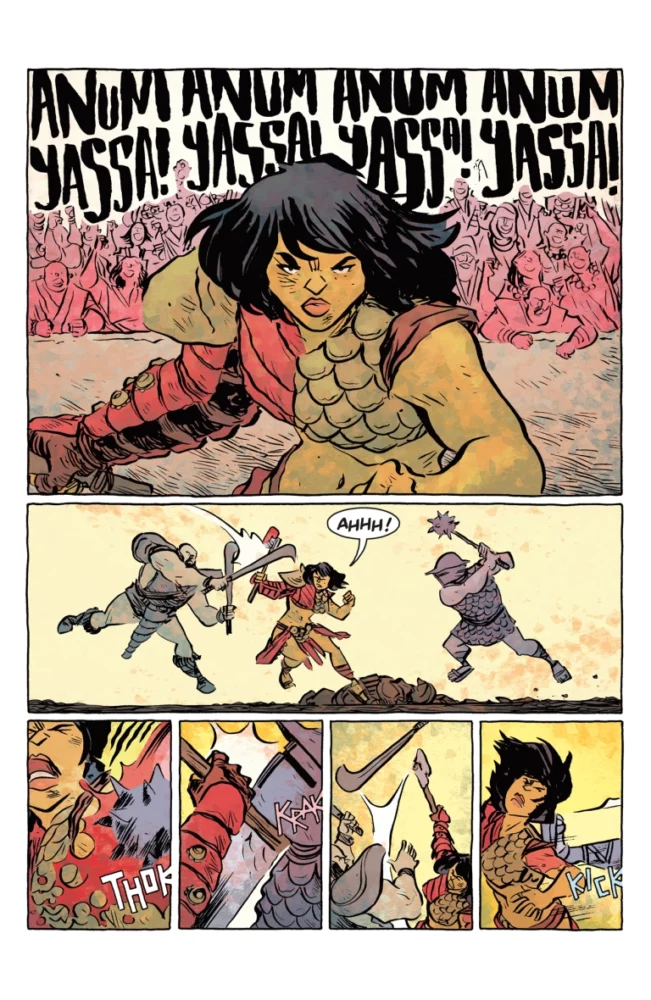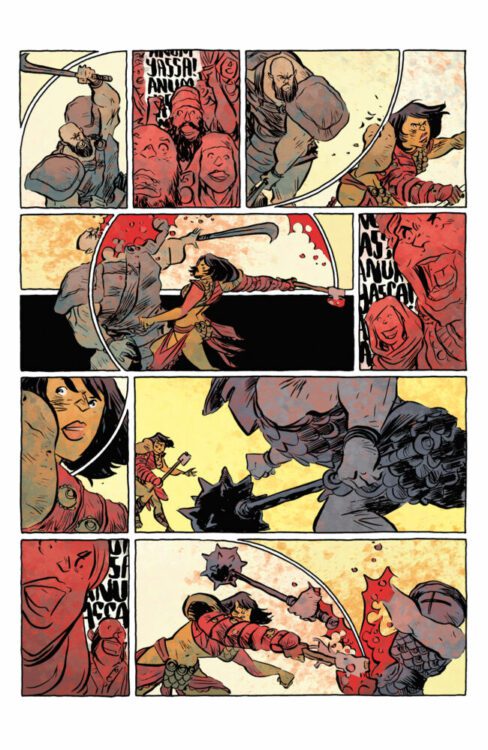Ever since Mike Mignola began ushering in other artists to take on his signature creation, Hellboy comics have never stuck to a single artistic look. Each artist brought to work on Mignola’s shared universe of comics has been given a great deal of freedom in interpreting his characters. Though the artists that get chosen for Hellboy have certainly changed. Mignola once used his influence to work with cartoonists he grew up admiring, like Richard Corben or John Severin. Over time, he’s shifted to highlighting rising young stars. Like Rachele Aragno. Or in this case, Jesse Lonergan. An artist who’s been getting a fair amount of buzz through recent works like Hedra or Planet Paradise. Miss Truesdale and the Fall of Hyperborea#1 by writer Mike Mignola, artist Jesse Lonergan, and letterer Clem Robins, acts as a great showcase for Lonergan’s unique talents.

About Miss Truesdale and the Fall of Hyperborea #1:
Miss Truesdale and the Fall of Hyperborea #1 opens in 1883, with the titular Miss Truesdale in conversation with the Queen of the Heliopic Brotherhood of Ra. The Brotherhood is a long-active secret Victorian occultist society, with deeply held beliefs in all sorts of supernatural phenomena. One of their strongest beliefs is in reincarnation. This belief is how a woman rose to the highest position of the Brotherhood, the members believing her to be the reincarnation of their founder. Miss Truesdale is not so lucky. For being a shy, unassuming young woman, the men of the Brotherhood have been treating her poorly. But the Queen confides in her that the two of them met in a previous life, in the mythical ancient city of Hyperborea. Though not in the city’s glory days. They met during its long decline, under the shadow of a violent gladiator tournament. And it turns out Miss Truesdale’s past life might not be as shy as her current self.
MFR ON YOUTUBE (latest video)
Help us reach 5K Subs!
Writing
There’s a lot of ground to cover in setting up both two different time periods and reincarnated lives, but Mignola keeps a healthy ebb and flow throughout the issue. An exposition-heavy first few pages makes way for several of silent action. Then, after explaining the circumstances of the past, the characters of the present react in relative silence. For all the lore that the issue has to juggle, the thoughts and feelings of the characters are expressed with the simple directness of a fable. But the depths and details of each feeling are trusted to the reader, shown through subtle expressions or blank, black panels.

Art
That reliance on expressions and pages of silent action means a lot falls on Lonergan’s shoulders. Thankfully, he’s more than up to the task. One of Lonergan’s most celebrated works, Hedra, mixed a simple style and limited color palette with dense, experimental layouts. Miss Truesdale still showcases some unusual page layouts — mainly in the action scenes — but its more straightforward storytelling and the bigger panels put more focus on expressions and body language. Much like with the writing’s “less is more” approach, Lonergan draws a great deal of expression out of simple linework. Truesdale’s face is often reduced down to dots for eyes, a curved line for a nose, and arched lips. And while the backgrounds will often drop out to put more focus on the characters, the ones we do get help establish a great sense of place. The Queen’s room in Paris and Truesdale’s place in London both feel of the time period, but Lonergan shows the differences between both effectively. The Queen’s room of reclining couches, plush furniture and wide windows is a far cry from Truesdale’s cramped space of bookshelves, desks, and knick-knacks.

Coloring
The coloring helps fill the wide open spaces throughout the comic with its speckled texture. The typical flat coloring style of the Mingolaverse is abandoned for spaces where different shades of the same color are applied in blocky splotches. It gives character and interest to the art, especially when it leans on single, overpowering colors to aid the storytelling — like the near-uniform brown of Truesdale’s mundane apartment in contrast to the bright reds and yellows of the past.
Lettering
Letterer Clem Robins is the main visual holdover from other Mignolaverse comics, keeping his rounded, clear block lettering. The text wavers with emotion during the gladiator tournament and shrinks during quiet moments to leave wide expanses of white in the word balloons. Clarity is the name of the game here, but with subtle shifts to highlight emotion.
VERDICT
Miss Truesdale and the Fall of Hyperborea #1 keeps true to Mignola’s long running love of classic pulp and the Victorian occult, but filtered through the vision of an incredibly promising up-and-comer. People who’ve kept up with the Mignolaverse will find more of what they like here, but will hopefully be inspired to check out more of Lonergan’s work, too. And if you like Lonergan but don’t know your Heliopic Brotherhood from your Oannes Society, just know that despite all the lore, the core of the story lies in simple, straightforward emotion. It’s out today from Dark Horse, so make sure to check it out.

